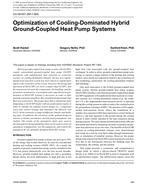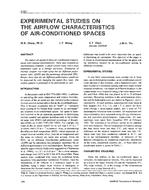In the interest of public safety, nuclear power plants filter much of the effluent ventilation air to remove radioiodine from the streams. In normal plant operations, releases of radioiodine, even without filtration, are only a small fraction of the conservatively established regulatory limits. However, in a maximum postulated accident, releases via the gaseous path could, if unfiltered, have deleterious effects The U.S . Nuclear Regulatory Commission (NRC) has established criteria for both the performance and the testing of the adsorption media (usually charcoal) in the filter beds. Media testing is done by contracting laboratories and the testing protocol and procedures have been established by the American Society of Testing Material (ASTM) in the document ASTM D3803-79, which has gradually replaced the several test procedures used previously as the guide for media testing.
The test requirements are stringent and necessitate using high-quality and well-calibrated state-of-the art temperature, relative humidity, and flow measuring instrumentation to monitor and maintain the sensitive parameters in the tests. A laboratory accreditation program has been proposed for the media testing industry in an attempt to attach an even higher credibility to the testing results. The first steps in this program have been inter-laboratory round-robin comparisons of test results and an evaluation of the testing protocol prescribed by the standard . These steps represent the present status of the program.
This paper presents a discussion of the testing requirements and describes a laboratory test system and its operation. The presentation continues with a discussion of the effects of some of the test parameters and of the present status of the accreditation program.
Units: SI
Citation: Symposium, ASHRAE Transactions, 1986, vol. 92, pt. 1B, San Francisco
Product Details
- Published:
- 1986
- Number of Pages:
- 11
- File Size:
- 1 file , 1.1 MB
- Product Code(s):
- D-SF-86-15-1


